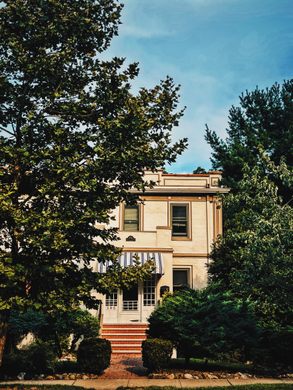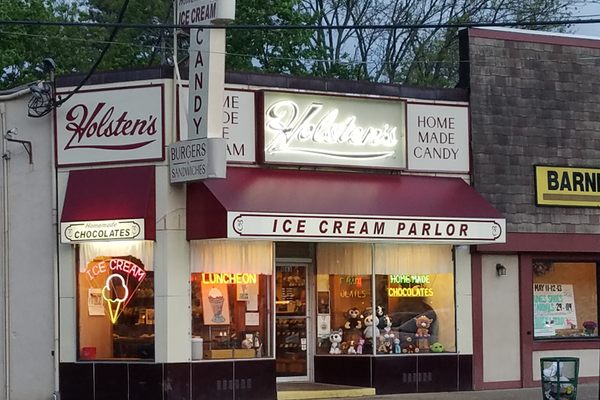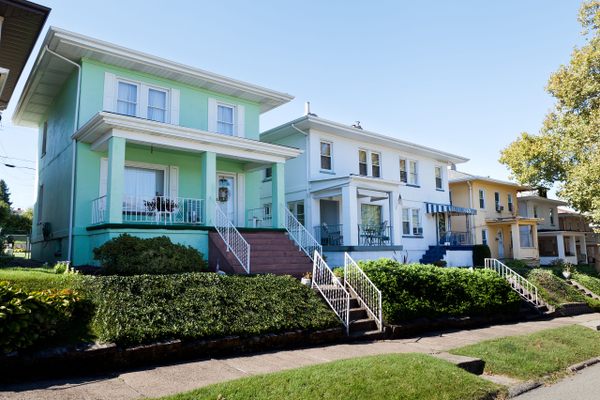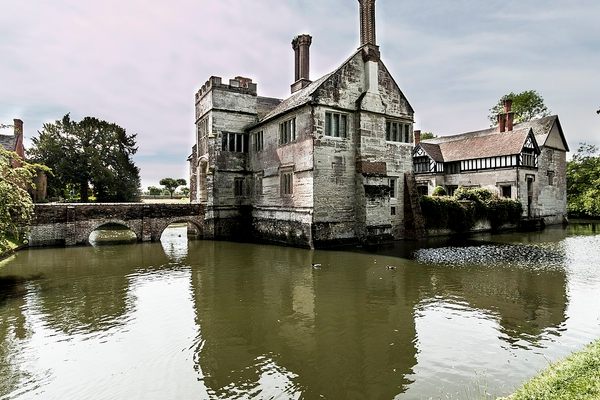Thomas Edison's Concrete Houses
Edison's cast-in-place concrete houses were a failure, but way ahead of their time.
Thomas Edison, the so-called “Wizard of Menlo Park,” is famous for inventing many things, including improvements to the light bulb, the phonograph, and the motion picture projector. But he’s not so well known for concrete, despite being obsessed with the material.
In 1908, the famous American inventor filed a patent for the construction of buildings using a single placement of concrete. Ultimately a massive failure, the idea was nonetheless way ahead of its time, and some of his concrete houses still stand today.
Edison founded the Portland Cement Company in 1899. The company always struggled, despite coming up with various improvements in the cement industry. It also supplied the concrete for the construction of Yankee Stadium in 1922, but went bankrupt a few years later.
During this period, Edison also came up with the idea for building homes out of cast-in-place concrete. The invention was patented in 1917, with the following introduction: “The object of my invention is to construct a building of a cement mixture by a single molding operation, all its parts, including the sides, roofs, partitions, bath tubs, floors, etc., being formed of an integral mass of a cement mixture.”
In theory, this would result in a whole new kind of home with various benefits: fireproof, insect-proof, easy to clean, and at a very affordable $1,200 per house. Edison saw this as a potential solution for cities with housing shortages, allowing people to move from slums to cheap new residential areas of poured concrete houses. To help with this, he chose to donate the patented information, completely free of charge, to qualified builders.
Edison had already experimented with reusable formwork molds in 1910, building a garage and a small cottage at his mansion in New Jersey. The reality of doing this on a larger scale, however, was far more complicated. Each house would require a mold consisting of some 2,300 pieces, and a builder would have to buy at least $175,000 in equipment before casting a single house. And despite Edison’s attempts to describe the homes as elegant and sophisticated, many people still considered them an affordable step-up for slum dwellers rather than a desirable lifestyle choice.
Despite the general lack of interest, the company did build a few concrete houses around New Jersey and Polk Street, Gary, Indiana, some of which still stand. And Edison didn’t let his concrete obsession crumble away. Before the company went bust, he turned to home furnishings. These were to be made using a new lightweight concrete, and would include everything from concrete phonograph cabinets to concrete pianos and concrete bedroom sets (and, for all your afterlife needs, concrete tombstones).
Again, however, it just wasn’t quite what people were looking for. The Edison Portland Cement Company lost millions of dollars, and Edison’s concrete endeavors never quite stuck. Still, he was certainly ahead of his time, predicting current innovations in affordable 3D-printed housing at least 100 years ago.
Know Before You Go
A few of Edison's concrete homes remain standing in New Jersey, including several blocks in Phillipsburg that were built for workers at the old Ingersoll-Rand plant. The map coordinates above point to what is perhaps the most lovingly restored example, at 303 North Mountain Avenue in Montclair.
Contractors for U.S. Steel also used Edison's molds to build row houses and detached cottages for the firm’s management staff in Gary, Indiana. About 70 of the 86 buildings that employed Edison’s molds still remain, some occupied and others in ruins.

























Follow us on Twitter to get the latest on the world's hidden wonders.
Like us on Facebook to get the latest on the world's hidden wonders.
Follow us on Twitter Like us on Facebook